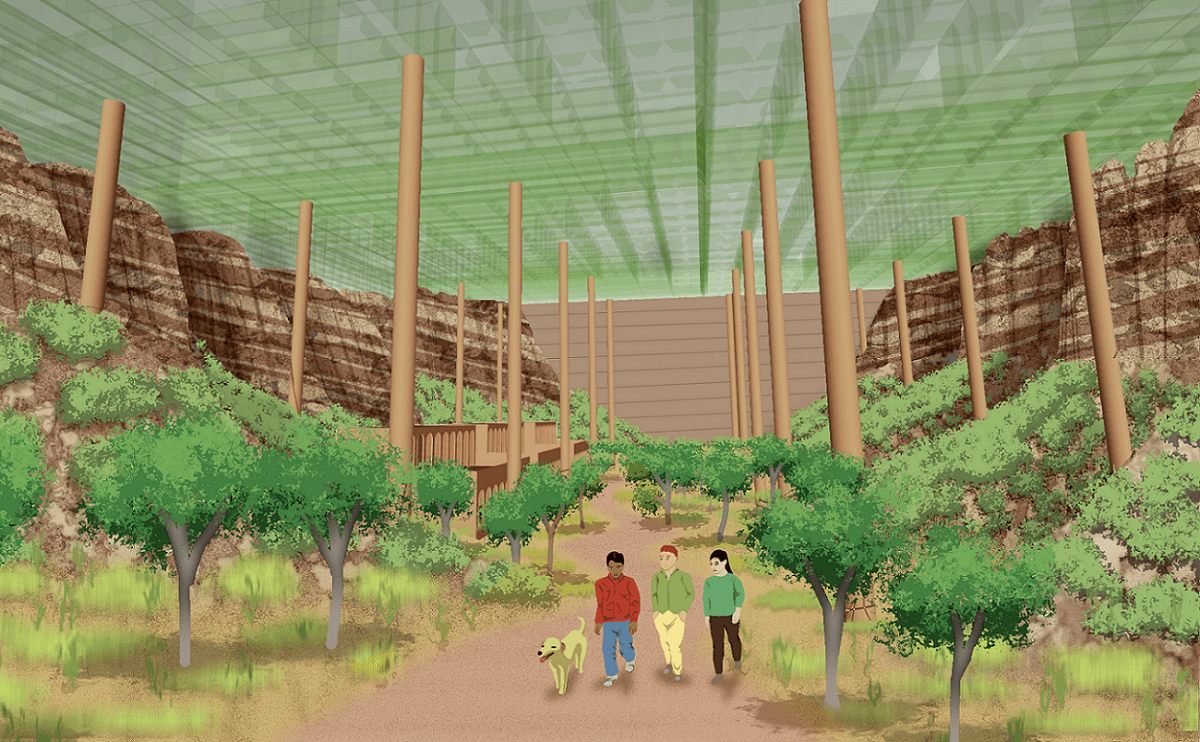For almost half a century, the term “Anthropocene” has been informally used to describe the current geological epoch. The term acknowledges how human agency has become the most significant factor when it comes to changes in Earth’s geology, landscape, ecosystems, and climate. According to a new study by a team of geologists and anthropologists, this same term should be extended to the Moon in recognition of humanity’s exploration (starting in the mid-20th century) and the growing impact our activities will have on the Moon’s geology and the landscape in the near future.
Continue reading “We've Entered a New Era: The Lunar Anthropocene”Does Beaming Power in Space Make Sense at the Moon?
Space-based solar power (SBSP) is considered one of the most promising technologies for addressing Climate Change. The concept calls for satellites in Low Earth Orbit (LEO) to collect power without interruption and beam it to receiving stations on Earth. This technology circumvents the main limiting factor of solar energy, which is how it is subject to the planet’s diurnal cycle and weather. While the prospect of SBSP has been considered promising for decades, it’s only in recent years that it has become practical, thanks to the declining costs of sending payloads to space.
However, the technology has applications beyond providing Earth with abundant clean energy. The European Space Agency (ESA) is also investigating it as a means of proving power on the Moon through the “Clean Energy – New Ideas for Solar Power from Space” study, which recently yielded a technology demonstrator known as the Greater Earth Lunar Power Station (GEO-LPS). This technology could provide a steady supply of power for future operations on the Moon, which include creating a permanent lunar base like the ESA’s proposed Moon Village.
Continue reading “Does Beaming Power in Space Make Sense at the Moon?”Artemis Astronauts Could Rely on Solar Cells Made out of Moon Dust
Within the next decade, several space agencies and commercial space partners will send crewed missions to the Moon. Unlike the “footprints and flags” missions of the Apollo Era, these missions are aimed at creating a “sustained program of lunar exploration.” In other words, we’re going back to the Moon with the intent to stay, which means that infrastructure needs to be created. This includes spacecraft, landers, habitats, landing and launch pads, transportation, food, water, and power systems. As always, space agencies are looking for ways to leverage local resources to meet these needs.
This process is known as in-situ resource utilization (ISRU), which reduces costs by limiting the number of payloads that need to be launched from Earth. Thanks to new research by a team from the Tallinn University of Technology (TalTech) in Estonia, it may be possible for astronauts to produce solar cells using locally-sources regolith (moon dust) to create a promising material known as pyrite. These findings could be a game-changer for missions in the near future, which include the ESA’s Moon Village, NASA’s Artemis Program, and the Sino-Russian International Lunar Research Station (ILRS).
Continue reading “Artemis Astronauts Could Rely on Solar Cells Made out of Moon Dust”Practical Ideas for Farming on the Moon and Mars
When the International Space Station (ISS) runs low on basic supplies – like food, water, and other necessities – they can be resupplied from Earth in a matter of hours. But when astronauts go the Moon for extended periods of time in the coming years, resupply missions will take much longer to get there. The same holds true for Mars, which can take months to get there while also being far more expensive.
It’s little wonder then why NASA and other space agencies are looking to develop methods and technologies that will ensure that their astronauts have a degree of self-sufficiency. According to NASA-supported research conducted by Daniel Tompkins of Grow Mars and Anthony Muscatello (formerly of the NASA Kennedy Space Center), ISRU methods will benefit immensely from some input from nature.
Continue reading “Practical Ideas for Farming on the Moon and Mars”Building Bricks on the Moon From Lunar Dust
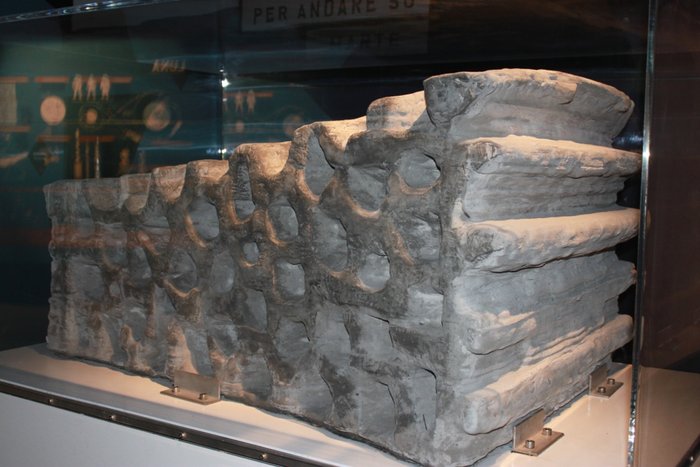
In the coming decades, many space agencies hope to conduct crewed missions to the Moon and even establish outposts there. In fact, between NASA, the European Space Agency (ESA), Roscosmos, and the Indian and Chinese space agencies, there are no shortages of plans to construct lunar bases and settlements. These will not only establish a human presence on the Moon, but facilitate missions to Mars and deeper into space.
For instance, the ESA is planning on building an “international lunar village” on the Moon by the 2030s. As the spiritual successor to the International Space Station (ISS), this village would also allow for scientific research in a lunar environment. Currently, European researchers are planning how to go about constructing this village, which includes conducting experiments with lunar dust simulants to create bricks.
To put it simply, the entire surface of the Moon is covered in dust (aka. regolith) that is composed of fine particles of rough silicate. This dust was formed over the course of billions of years by constant meteorite impacts which pounded the silicate mantle into fine particles. It has remained in a rough and fine state due to the fact that the lunar surface experiences no weathering or erosion (due to the lack of an atmosphere and liquid water).
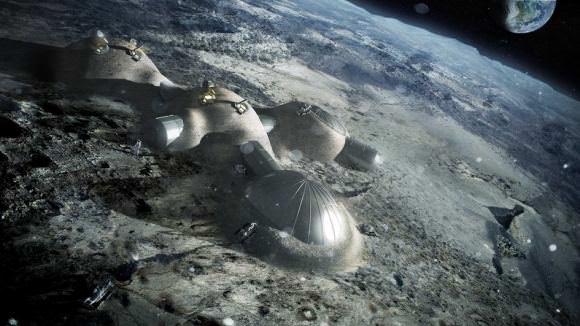
Because it is so plentiful, reaching depths of 4-5 meters (13-16.5 feet) in some places – and up to 15 meters (49 feet) in the older highland areas – regolith is considered by many space agencies to be the building material of choice for lunar settlements. As Aidan Cowley, the ESA’s science advisor and an expert when it comes to lunar soil, explained in a recent ESA press release:
“Moon bricks will be made of dust. You can create solid blocks out of it to build roads and launch pads, or habitats that protect your astronauts from the harsh lunar environment.”
In addition to taking advantage of a seemingly inexhaustible local resource, the ESA’s plans to use lunar regolith to create this base and related infrastructure demonstrates their commitment to in-situ resource utilization. Basically, bases on the Moon, Mars, and other locations in the Solar System will need to be as self-sufficient as possible to reduce reliance on Earth for regular shipments of supplies – which would both expensive and resource-exhaustive.
To test how lunar regolith would fare as a building material, ESA scientists have been using Moon dust simulants harvested right here on Earth. As Aiden explained, regolith on both Earth and the Moon are the product of volcanism and are basically basaltic material made up of silicates. “The Moon and Earth share a common geological history,” he said, “and it is not difficult to find material similar to that found on the Moon in the remnants of lava flows.”

The simulant were harvested from the region around Cologne, Germany, that were volcanically active about 45 million years ago. Using volcanic powder from these ancient lava flows, which was determined to be a good match for lunar dust, researchers from the European Astronaut Center (EAC) began using the powder (which they’ve named EAC-1) to fashioning prototypes of the bricks that would be used to created the lunar village.
Spaceship EAC, an ESA initiative designed to tackle the challenges of crewed spaceflight, is also working with EAC-1 to develop the technologies and concepts that will be needed to create a lunar outpost and for future missions to the Moon. One of their projects centers on how to use the oxygen in lunar dust (which accounts for 40% of it) to help astronauts have extended stays on the Moon.
But before the ESA can sign off on lunar dust as a building material, a number of tests still need to be conducted. These include recreating the behavior of lunar dust in a radiation environment to simulate their electrostatic behavior. For decades, scientists have known that lunar dust is electrically-charged because of the way it is constantly bombarded by solar and cosmic radiation.
This is what causes it to lift off the surface and cling to anything it touches (which the Apollo 11 astronauts noticed upon returning to the Lunar Module). As Erin Transfield – a member of ESA’s lunar dust topical team – indicated, scientists still do not fully understand lunar dust’s electrostatic nature, which could pose a problem when it comes to using it as a building material.
What’s more, the radiation-environment experiments have not produced any conclusive results yet. As a biologist who dreams of being the first woman on the Moon, Transfield indicated that more research is necessary using actual lunar dust. “This gives us one more reason to go back to the Moon,” she said. “We need pristine samples from the surface exposed to the radiation environment.”
Beyond establishing a human presence on the Moon and allowing for deep-space missions, the construction of the ESA’s proposed lunar village would also offer opportunities to leverage new technologies and forge partnerships between the public and private sector. For instance, the ESA has collaborated with the architectural design firm Foster + Partners to come up with the design for their lunar village, and other private companies have been recruited to help investigate other aspects of building it.
At present, the ESA plans to build their international lunar village in southern polar region, where plentiful water ice has been discovered. To investigate this, the ESA will be sending their Package for Resource Observation and in-Situ Prospecting for Exploration, Commercial exploitation and Transportation (PROSPECT) mission to the Moon in 2020, which will be travelling as part of the Russian Luna-27 mission.
This mission, a joint effort between the ESA and Roscosmos, will involve a Russian-built lander setting down in the Moon’s South Pole-Aitken Basin, where the PROSPECT probe will deploy and drill into the surface to retrieve samples of ice. Going forward, the ESA’s long-term plans also call for a series of missions to the Moon beginning in the 2020s that would involve robot workers paving the way for human explorers to land later.
In the coming decades, the intentions of the world’s leading space agencies are clear – not only are we going back to the Moon, but we intend to stay there! To that end, considerable resources are being dedicated towards researching and developing the necessary technologies and concepts needed to make this happen. By the 2030s, we might just see astronauts (and even private citizens) coming and going from the Moon with regular frequency.
And be sure to check out this video about the EAC’s efforts to study lunar regolith, courtesy of the ESA:
Further Reading: ESA
Europe & China Discuss Moonbase Partnership

In recent years, multiple space agencies have shared their plans to return astronauts to the Moon, not to mention establishing an outpost there. Beyond NASA’s plan to revitalize lunar exploration, the European Space Agency (ESA), Rocosmos, and the Chinese and Indian federal space agencies have also announced plans for crewed missions to the Moon that could result in permanent settlements.
As with all things in this new age of space exploration, collaboration appears to be the key to making things happen. This certainly seems to be the case when it comes to the China National Space Administration (CNSA) and the ESA’s respective plans for lunar exploration. As spokespeople from both agencies announced this week, the CNSA and the ESA hope to work together to create a “Moon Village” by the 2020s.
The announcement first came from the Secretary General of the Chinese space agency (Tian Yulong). On earlier today (Wednesday, April 26th) it was confirmed by the head of media relations for the ESA (Pal A. Hvistendahl). As Hvistendahl was quoted as saying by the Associated Press:
“The Chinese have a very ambitious moon program already in place. Space has changed since the space race of the ’60s. We recognize that to explore space for peaceful purposes, we do international cooperation.”
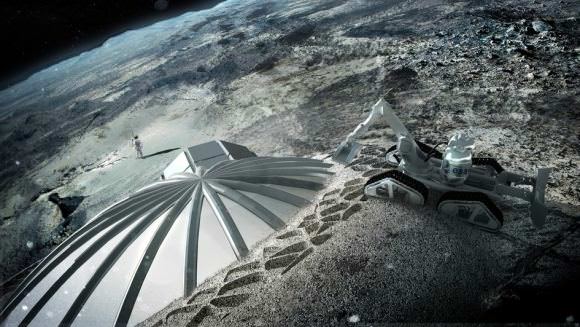
Yulong and Hvistendahl indicated that this base would aid in the development of lunar mining, space tourism, and facilitate missions deeper into space – particularly to Mars. It would also build upon recent accomplishments by both agencies, which have successfully deployed robotic orbiters and landers to the Moon in the past few decades. These include the CNSA’s Chang’e missions, as well as the ESA’s SMART-1 mission.
As part of the Chang’e program, the Chinese landers explored the lunar surface in part to investigate the prospect of mining Helium-3, which could be used to power fusion reactors here on Earth. Similarly, the SMART-1 mission created detailed maps of the northern polar region of the Moon. By charting the geography and illumination of the lunar north pole, the probe helped to identify possible base sites where water ice could be harvested.
While no other details of this proposed village have been released just yet, it is likely that the plan will build on the vision expressed by ESA director Jan Woerner back in December of 2015. While attending the “Moon 2020-2030 – A New Era of Coordinated Human and Robotic Exploration” symposium, Woerner expressed his agency’s desire to create an international lunar base as a successor to the International Space Station.
In addition, its is likely that the construction of this base will rely on additive manufacture (aka. 3-d printing) techniques specially developed for the lunar environment. In 2013, the ESA announced that they had teamed up with renowned architects Foster+Partners to test the feasibility of using lunar soil to print walls that would protect lunar domes from harmful radiation and micrometeorites.
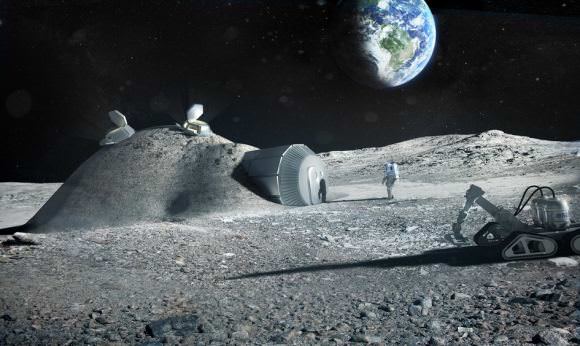
This agreement could signal a new era for the CNSA, which has enjoyed little in the way of cooperation with other federal space agencies in the past. Due to the agency’s strong military connections, the U.S. government passed legislation in 2011 that barred the CSNA from participating in the International Space Station. But an agreement between the ESA and China could open the way for a three-party collaboration involving NASA.
The ESA, NASA and Roscosmos also entered into talks back in 2012 about the possibility of creating a lunar base together. Assuming that all four nations can agree on a framework, any future Moon Village could involve astronauts from all the world’s largest space agencies. Such a outpost, where research could be conducted on the long-term effects of exposure to low-g and extra-terrestrial environments, would be invaluable to space exploration.
In the meantime, the CNSA hopes to launch a sample-return mission to the Moon by the end of 2017 – Chang’e 5 – and to send the Chang’e 4 mission (whose launch was delayed in 2015) to the far side of the Moon by 2018. For its part, the ESA hopes to conduct a mission analysis on samples brought back by Chang’e 5, and also wants to send a European astronaut to Tiangong-2 (which just conducted its first automated cargo delivery) at some future date.
As has been said countless times since the end of the Apollo Era – “We’re going back to the Moon. And this time, we intend to stay!”




